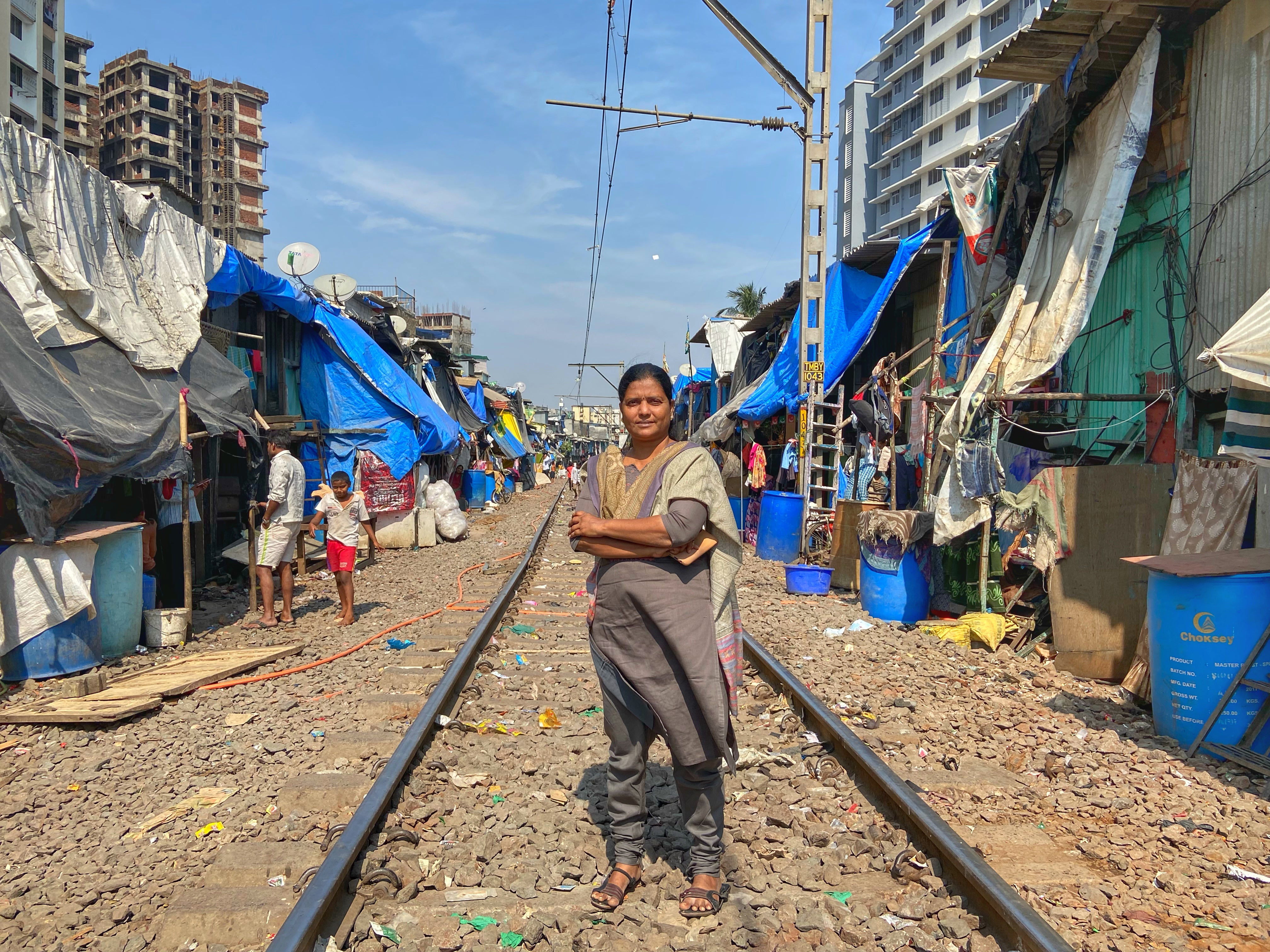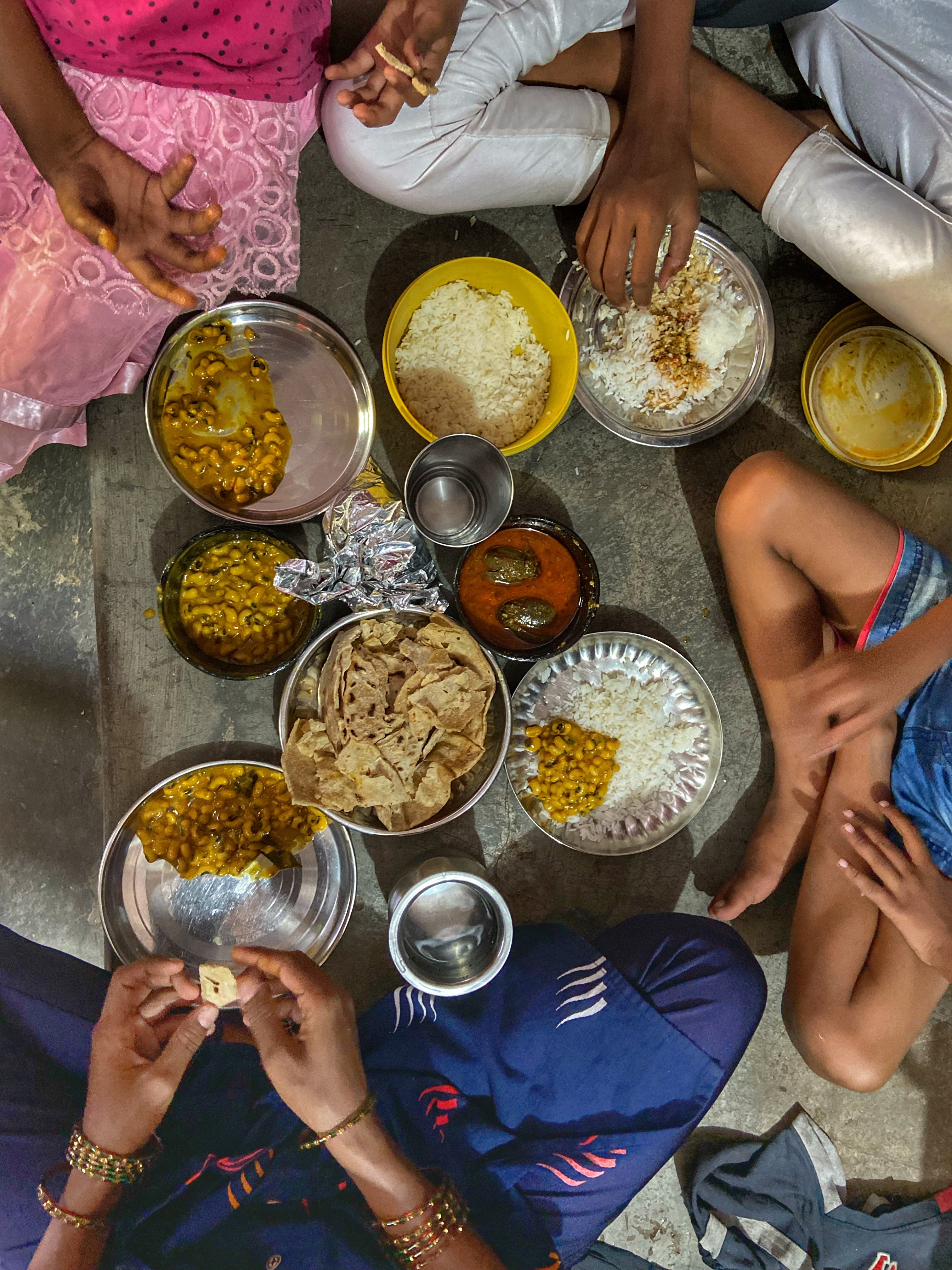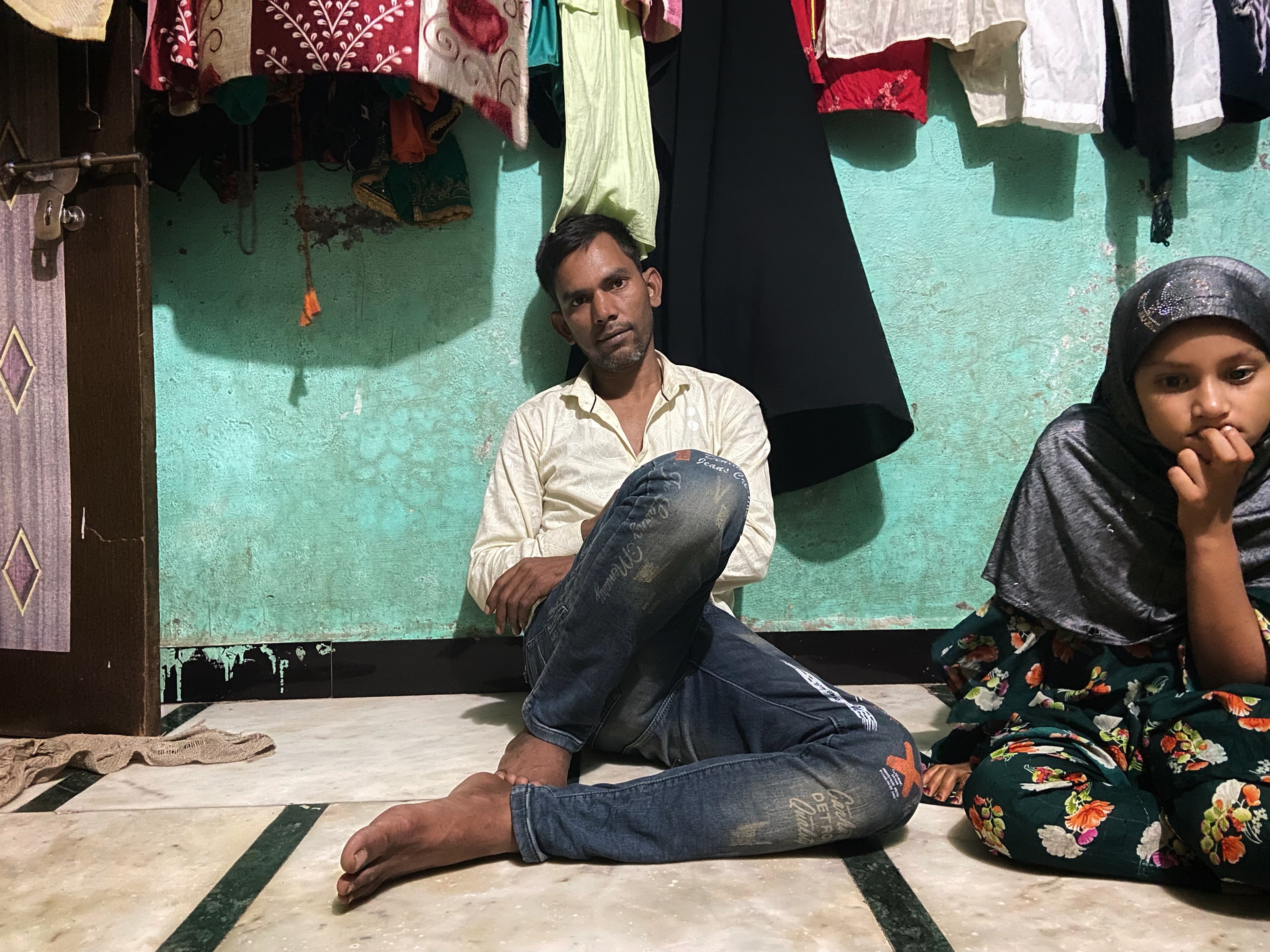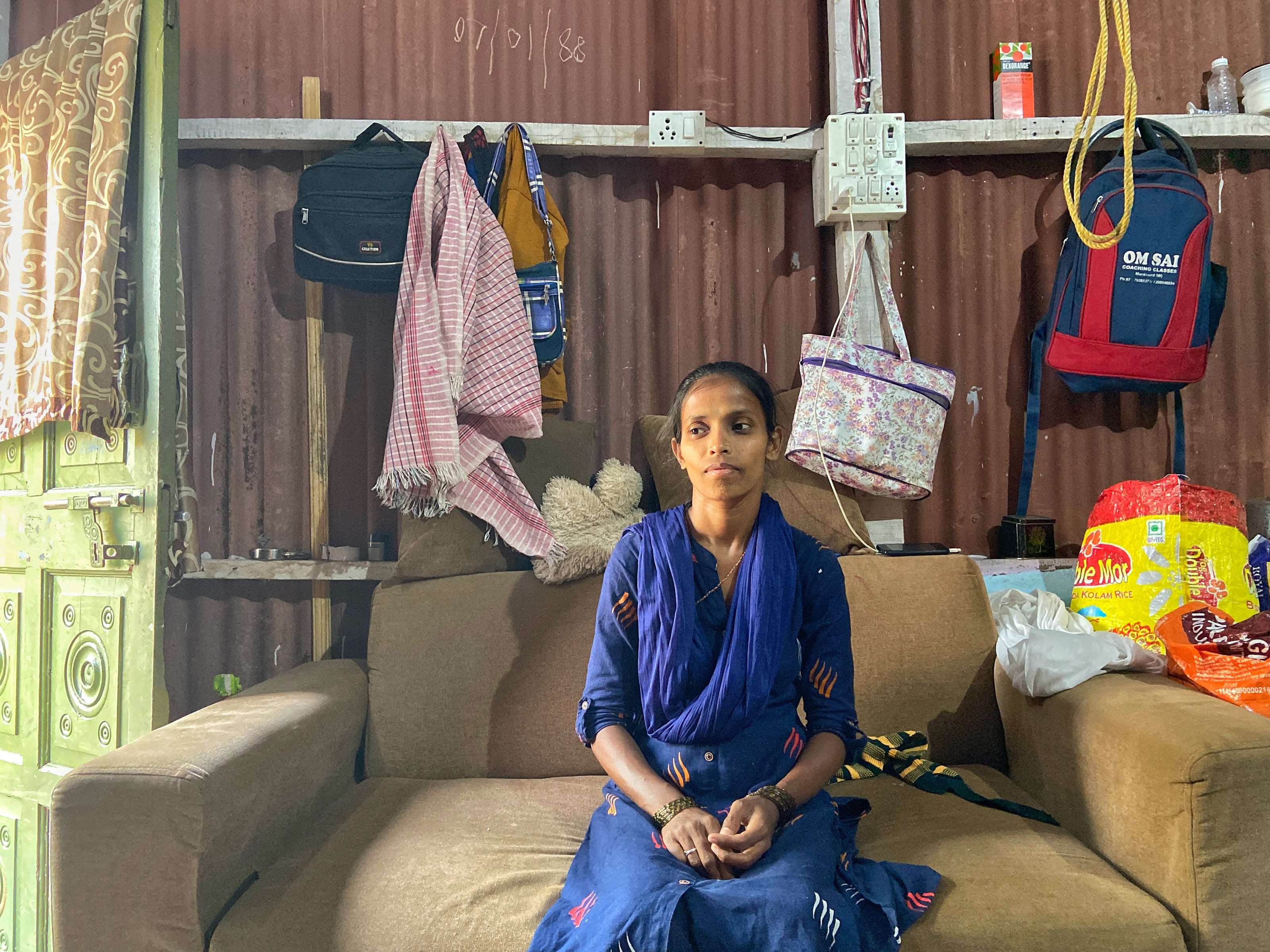As Covid recedes in India, the hunger crisis persists
Niha Masih meets the families still depending on food aid, more than 600 days after the country’s first lockdown in 2020

Your support helps us to tell the story
From reproductive rights to climate change to Big Tech, The Independent is on the ground when the story is developing. Whether it's investigating the financials of Elon Musk's pro-Trump PAC or producing our latest documentary, 'The A Word', which shines a light on the American women fighting for reproductive rights, we know how important it is to parse out the facts from the messaging.
At such a critical moment in US history, we need reporters on the ground. Your donation allows us to keep sending journalists to speak to both sides of the story.
The Independent is trusted by Americans across the entire political spectrum. And unlike many other quality news outlets, we choose not to lock Americans out of our reporting and analysis with paywalls. We believe quality journalism should be available to everyone, paid for by those who can afford it.
Your support makes all the difference.One evening in October, Meena Sonawane, a domestic worker living in a slum in the Mumbai suburb of Chembur, cooked dinner with the only food in her kitchen: rice. She mixed red chilli powder into the rice, then carefully divided it into three portions for her children, keeping two spoonfuls for herself.
A day before, the last money she had left was spent at the hospital where her husband had died after a brief illness. In the commotion, she missed her daily pickup of the free meals handed out by a local nonprofit.
“I felt gutted to feed them just rice and chilli,” 34-year-old Sonawane says. “But there was no choice.”
For more than 600 days – since India’s first coronavirus lockdown in early 2020 – the Sonawane family has depended on food aid. Even as the number of coronavirus cases diminishes, another crisis is unfolding in homes across the country. With high unemployment and a record contraction in the economy following two nationwide lockdowns, families like the Sonawanes have lost both their purchasing power and savings and can now scarcely afford three meals a day.
There are no nationwide numbers on the state of food insecurity in India, but recent studies point to an alarming problem. In the 2021 Global Hunger Index released in October, India ranked 101st of the 116 countries surveyed, falling seven spots from the previous year. In a separate 2020 survey by Azim Premji University in Bangalore, 90 per cent of respondents reported a reduction in food intake due to the lockdown. Twenty per cent of respondents continued to battle the problem even six months later.
The Indian government dismissed the Hunger Index ranking, saying that estimates used for the undernourished population were “devoid of ground reality” and that the report disregarded its “massive effort” during the pandemic. Oxfam India, in a statement, said the Hunger Index “unfortunately reflects the reality of the country where hunger [has been] accentuated since the Covid-19 pandemic.”
India’s Ministry of Food and Public Distribution has not responded to requests for comment.
India’s food security law aims to provide free or subsidised food grains to two-thirds of the country’s population, making it the largest safety net in the country
“The hunger crisis is, in fact, fundamentally reflective of the livelihood crisis,” says Jayati Ghosh, a development economist. People do not have money to buy food, she says, and “that’s both our employment and food systems failing.”
The unemployment rate between April and June 2020, at the height of the first lockdown, was nearly 21 per cent in urban areas, according to government figures. Even as the economy showed signs of revival in 2021, 15 million jobs were lost in May, when a devastating second wave killed hundreds of thousands and brought the health-care system to near collapse.
Nearly 80 per cent of India’s workforce makes a living in the informal sector, which economists say has been the worst hit. The problem is more pronounced in urban areas like Mumbai, where such workers subsist on their daily income for survival and lack networks or resources such as agricultural land in their home villages.
Sonawane’s work and life came to a sudden halt with the two lockdowns. The five jobs she worked – cleaning and cooking at upscale homes in the high-rise buildings visible from her cramped shanty – disappeared immediately.
Her husband, who worked as a delivery person for a gas company, stayed home. So did her three children, including her youngest son, seven, who would repeatedly ask her in the early days when school would reopen. Now, she says, he has forgotten much of what he learned, as primary schools in the city have remained shut since the initial closures in March 2020.

After the lockdowns were lifted, Sonawane went back to work. But the world outside had changed.
Two of the families she worked for had left the city, and another told her not to return over coronavirus concerns. Her pre-pandemic income of £120 a month shrank by half. Her husband’s company laid him off.
“We never had food shortages at home” before this, Sonawane says. “We always earned enough to feed the family.”
India’s food security law aims to provide free or subsidised food grains to two-thirds of the country’s population, making it the largest safety net in the country. But experts say gaps, its reliance on biometric authentication and a narrow scope have hindered its efficacy.
During the lockdown, the government expanded benefits by providing an extra five kilos of rice or wheat every month to those eligible, a programme that was recently extended to March 2022.
But economists say the law’s coverage needs to account for the increase in population over the past decade, which could bring an additional 100 million people under its purview.
Not far from Chembur, where Sonawane lives, is the working-class neighbourhood of Govandi, framed by the country’s largest landfill. In one of the narrow streets is the home of 31-year-old Farhan Ahmad, a father of two, who worked as a driver and is one of the millions of migrants who have fallen through the cracks in the food law.

The five years before the pandemic had been good for Ahmad, who had moved to Mumbai from his village hoping to make a life in the city.
Ahmad signed up to drive with Ola, an Indian multinational ride-hailing company, when a friend lent him a car if he agreed to pay back the loan on it. By the time Covid-19 arrived, he had a small sum set aside in savings. He and his wife debated buying a refrigerator.
“Forget about affording a fridge now,” says Ahmad. “On most days I can’t buy enough food.”
On a recent evening, Ahmad’s wife, Shama, rocked their 15-month-old daughter as she cried. It was yet another day when they had not been able to buy milk for the baby. In his wallet, Ahmad had less than half a dollar. His bank account is empty, and a mountain of debt has steadily grown.
The car has gone because he was unable to repay the loan. Now, he says, he is ready to work any job.
“But no jobs are available. There are too many people like me,” he says.
For the first few months of the lockdown, Ahmad’s family ate meals supplied by a local activist, then subsisted on ration kits supplied by another group, which stopped in July.
Not investing in food security is like underinvesting in your people and your future workforce
Since then, Ahmad has relied on his relatives for help with food and money. The family’s diet no longer includes fruit, eggs or meat – items that were once a staple. Twice a week, they buy vegetables. On other days, they eat rice or flatbread with garlic chutney.
And yet India’s food grain stocks are currently nearly three times more than the normal reserve, a paradox that Ghosh, the economist, says is impossible to explain.
She says the government must immediately provide rations to everyone in need, expand the commodities given out, and increase spending on programmes guaranteeing employment and pensions.
“None of this is an act of God that one cannot do something about,” she says.
The long-term implications of food insecurity are grave. Varna Sri Raman, a researcher at Oxfam India, says the government’s own data from 2019-20 shows malnutrition among children rose, reversing gains from five years ago.
“Not investing in food security is like underinvesting in your people and your future workforce,” she says. “In terms of policy, it’s very shortsighted.”
As critics slam the government for not stepping up, citizen-led initiatives move to fill the gap. In Mumbai, the Want Food collective began as a short-term arrangement to help stranded migrant workers when the first lockdown was announced suddenly. But the demands swelled and the collective began to provide meals to vulnerable communities across the city – 6.6 million at last count.
The collective has funded two women-led community kitchens in the city that are still operating.

Sujata Sawant, a local activist who helped set up one of the kitchens in a suburban slum in Kurla, says the community’s need was always more than the help that poured in.
“The desperation for food in the lockdowns was something I’ve never seen,” says Sawant, 43. In April, when they began to cook and distribute meals themselves, “the lines were as long as the eye could see,” Sawant recounts in her tiny office across from a defunct railway line that cuts through the slum.
The number of people relying on meals from the kitchen has fallen drastically, but they still cater for nearly 800 packets every day, an indication of how hunger continues to stalk those on the margins.
Sawant said she foresees another six months before things improve – if another wave of the virus doesn’t hit.
On a recent afternoon, as Sonawane, the domestic worker, returns home from work, she picks up two food packets sent by Sawant’s team.
Later, her three children sit on the stone floor of their home ready for their family meal.
She has cooked a local variety of cheap beans that they will eat with stale flatbread from the previous day. There is also some leftover rice and eggplant that her employer has shared. The fridge is empty, aside from a present of a box of sweets from a festival and a lump of butter.
“When the children ask for more food, I have no answer,” she says. “I don’t know how we will keep going like this.”
Sonawane carefully saves the day’s food packets from the nonprofit – rice and lentils cooked together – for the next meal.
© The Washington Post




Join our commenting forum
Join thought-provoking conversations, follow other Independent readers and see their replies
Comments